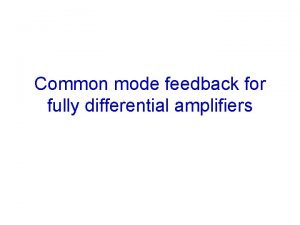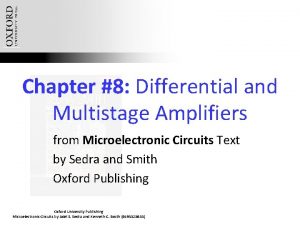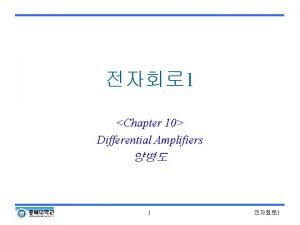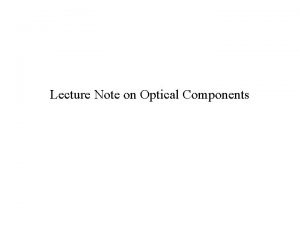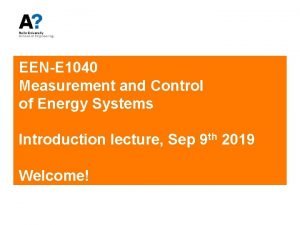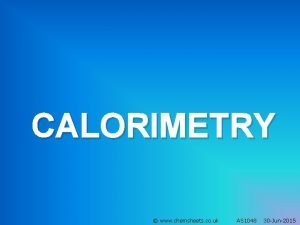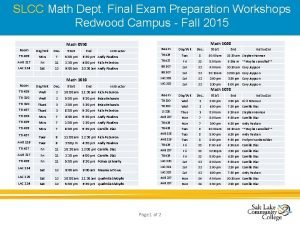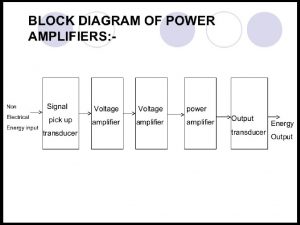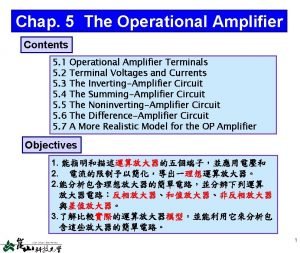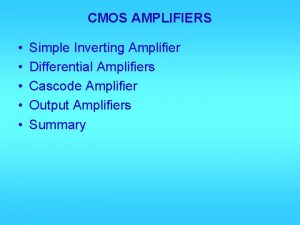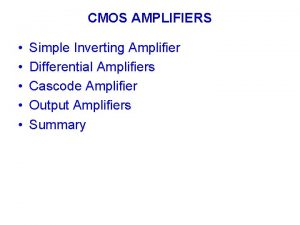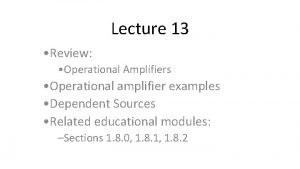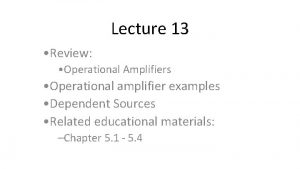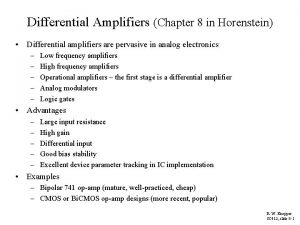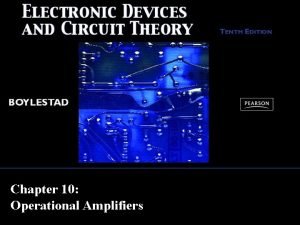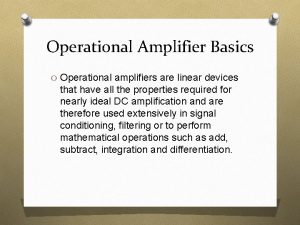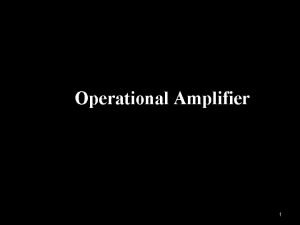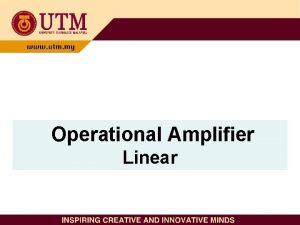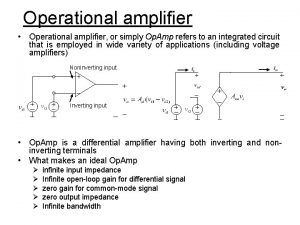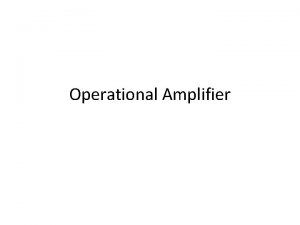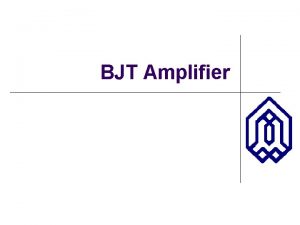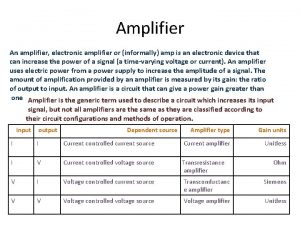EUT 1040 Lecture 4 Operational Amplifiers Differential Amplifier
















- Slides: 16

EUT 1040 Lecture 4: Operational Amplifiers

Differential Amplifier • Not Practical Prior to IC Fabrication • 2 Inputs, Output is Av*(V 1 - V 2)

Common Mode Rejection • Differential Amps won’t Amplify Signals that are Common to both Inputs

Operational Amplifier • Three Stages: – Differential Amplifier (Input Stage) – Voltage Amplifier (High Gain) – Output Stage (low output impedance)

Op Amp Characteristics • • High Input Impedance ( 1 M-Ohm) Low Output Impedance (100 Ohms) High Voltage Gain (A = 100, 000) 2 Differential Inputs – Inverting Input (V-) – Non-Inverting Input (V+)

Equivalent Circuit Model • Differential Input Voltage determines Output Voltage

Ideal Op Amp • Input Impedance is Infinite (No input Current, I- = I+ = 0) • Voltage Gain is Infinite (A = Infinity) • Inverting and Non-inverting inputs at equal potential (V+ = V- )

Feedback • Open Loop Voltage Gain is so High that External Feedback is always used • Output Signal is Fed Back to an Input Terminal

Analysis of Ideal Op Amp Circuits • Set V- = V+ and I- = I+ = 0 • Write Nodal Equation(s)

Basic Op Amp Circuits • Voltage Follower: Impedance Matching or Isolation • Unity Gain: Vout = Vin

Inverting Amplifier • Vout = -(R 2/R 1)*Vin

Non-Inverting Amplifier • Vout = Vin*(R 1+R 2)/R 1

Summing Amplifier • Vout = -(V 1*Rf/R 1 + V 2*Rf/R 2 + V 3*Rf/R 3)

Difference Amplifier • Vout = (V 2 -V 1)*R 2/R 1

Analysis of the Voltage Follower • Provides “Current Isolation” – No Power Drawn from Input Circuit

References • Heathkit, Electronic Circuits, EB-6104 A, 2002 • Alexander, Fundamentals of Circuit Analysis – 2 nd Edition, Mc. Graw-Hill, 2004
 Operational amplifiers
Operational amplifiers Common mode feedback
Common mode feedback Microelectronic
Microelectronic Differential and multistage amplifiers
Differential and multistage amplifiers Differential and multistage amplifiers
Differential and multistage amplifiers Optical amplifiers lecture notes
Optical amplifiers lecture notes Eut
Eut Titan marié à phebe
Titan marié à phebe Prof dr murat vural
Prof dr murat vural Rue belliard 4-6
Rue belliard 4-6 Pub 4012
Pub 4012 10.10.1040
10.10.1040 Chemsheets as 049 answers
Chemsheets as 049 answers Math 1040 slcc
Math 1040 slcc Bus 1040
Bus 1040 Difference between power and voltage amplifier
Difference between power and voltage amplifier Summing amplifier op amp
Summing amplifier op amp

